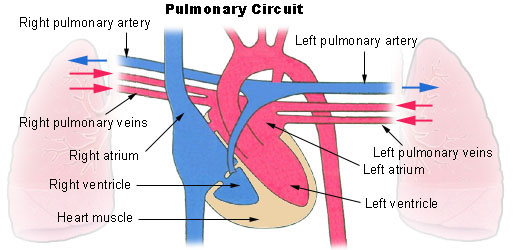Q:
I had written previously and had echo results as follows. 6 months after the 2nd echo my RVSP was 57. The cardiologist still believes obesity is the cause and wants to wait 6 more months to repreat the echo. He says the 57 is not a substantial increase from the 47-50 from the first and 2nd echo. What do you recommend? Obviously the number seems scary to me.
Question
I wrote earlier about having a high RVSP and whether I should have a heart cath. I had the 2nd echo 3 mos after the other one and the number had been 48 and was this time 47. Do I need a heart cath with these numbers?
- Normal chamber dimensions
normal aortic root size
normal left ventricle wall thickness
normal left vent systolic function and wall motion
est EF 60-65%
normalvalve morpholoogy
trace to mild tricsupid regurg
moderate PH right vent systolic pressure=47
normal mitral filling pattern
no pericardial effusion
A:
A high RVSP indeed suggests Pulmonary Hypertension. There has been a modest rise to RVSP=57, but you haven’t told me what the other findings were, such as whether your Pulmonary valve (the tricuspid valve) leakage has worsened. You don’t have severe tricuspid regurgitation, only mild at your previous ECHO and normal function of the left side of your heart. However, these ECHOs have only established you have PH, not the possible causes.
Pulmonary hypertension (PH or PAH) is an increase in blood pressure in the pulmonary artery, pulmonary vein, or pulmonary capillaries, together known as the lung vasculature, leading to shortness of breath, dizziness, fainting, and other symptoms, all of which are exacerbated by exertion. Pulmonary hypertension can be a severe disease with a markedly decreased exercise tolerance and heart failure.
Normal PAP (measured invasively by right heart catheterization) has a peak systolic value of
18 to 25 mmHg. Accurate quantitative measures of right heart pressures are difficult to obtain
by non-invasive techniques. Echo measurements are estimations. Therefore, preference is
given to invasive values, but they are rarely available.
Widespread use of echocardiograms has led to the observation of mild elevations (40-50
mmHg range) in RVSP/PAP. The World Health Organization (WHO) recommends that, in
asymptomatic individuals, the echocardiogram be repeated in six months. In symptomatic
individuals, right heart catheterization is indicated to confirm the finding of elevated PAP.
A physical examination is performed to look for typical signs of pulmonary hypertension.
Further procedures are required to confirm the presence of pulmonary hypertension and exclude other possible diagnoses. These generally include pulmonary function tests; blood tests to exclude HIV, autoimmune diseases, and liver disease; electrocardiography (ECG); arterial blood gas measurements; X-rays of the chest (followed by high-resolution CT scanning if interstitial lung disease is suspected); and ventilation-perfusion or V/Q scanning to exclude chronic thromboembolic pulmonary hypertension. Clinical improvement is often measured by a “six-minute walk test”, i.e. the distance a patient can walk in six minutes. Stability and improvement in this measurement correlate with better survival.
Treatment is determined by the cause of PH and the clinical findings.
Hope this helps,
Dr T

